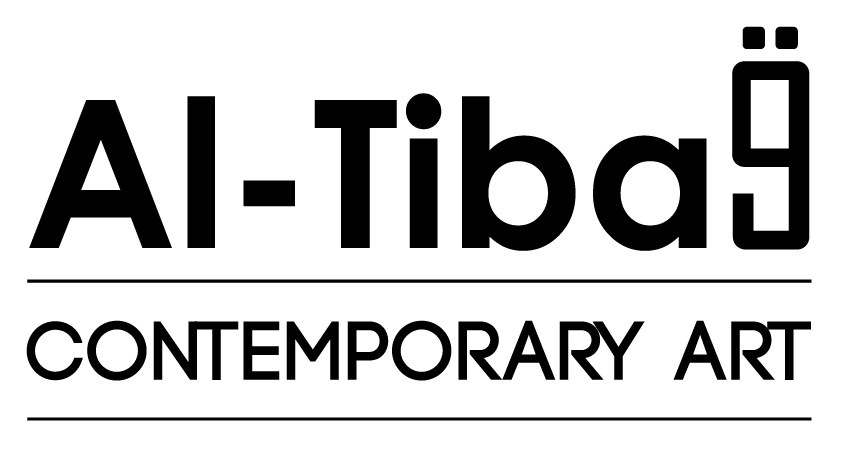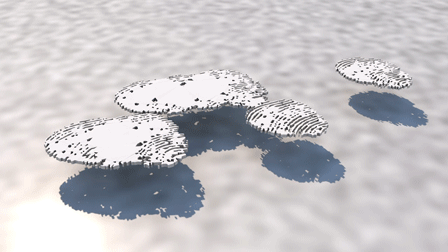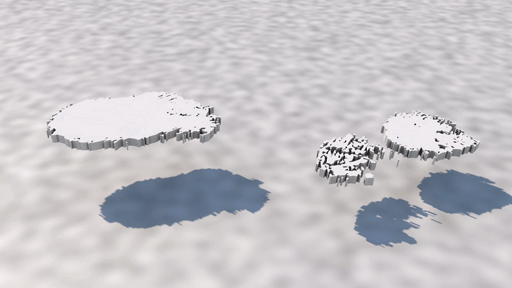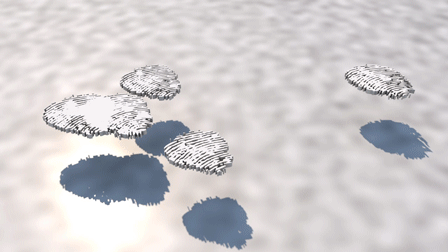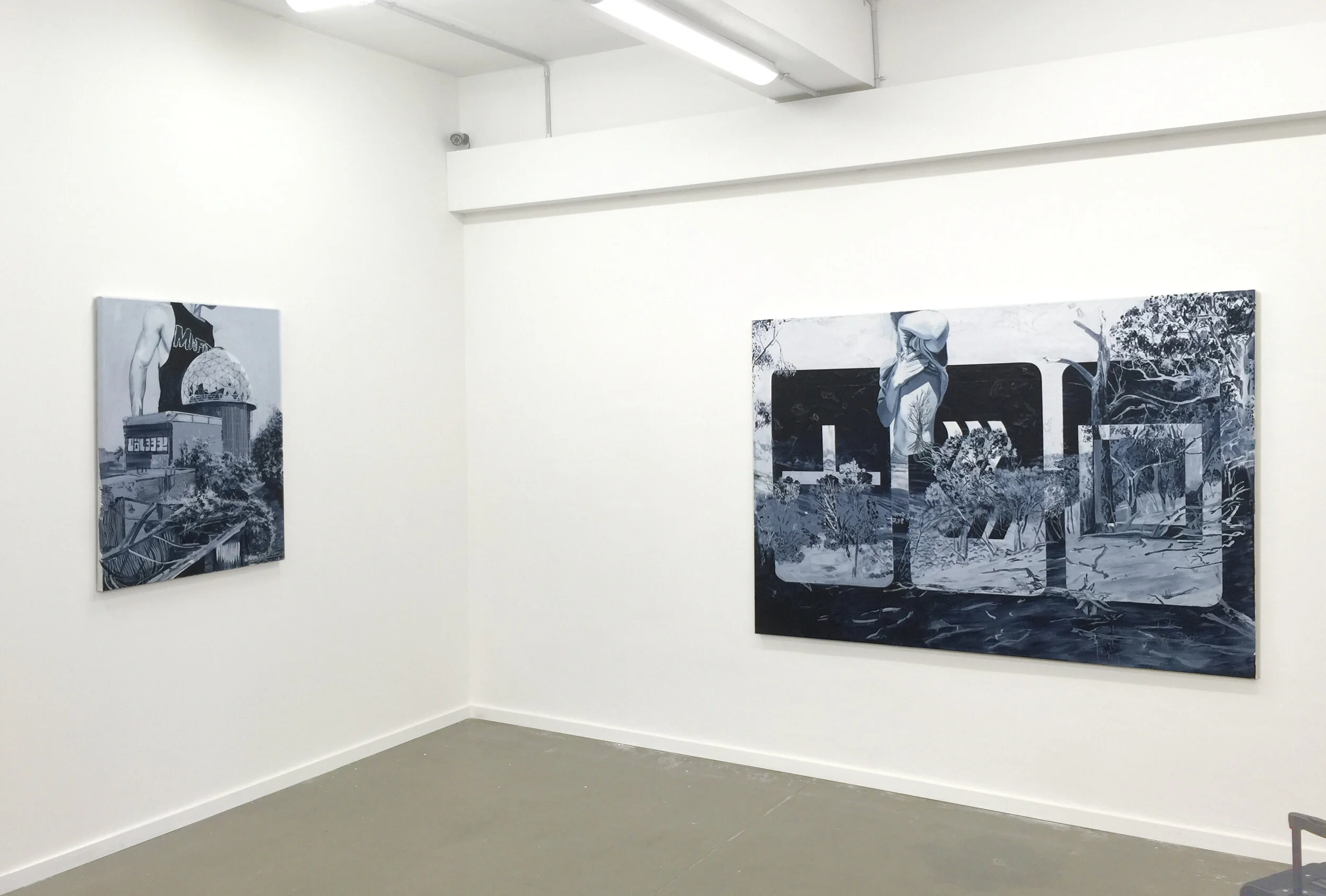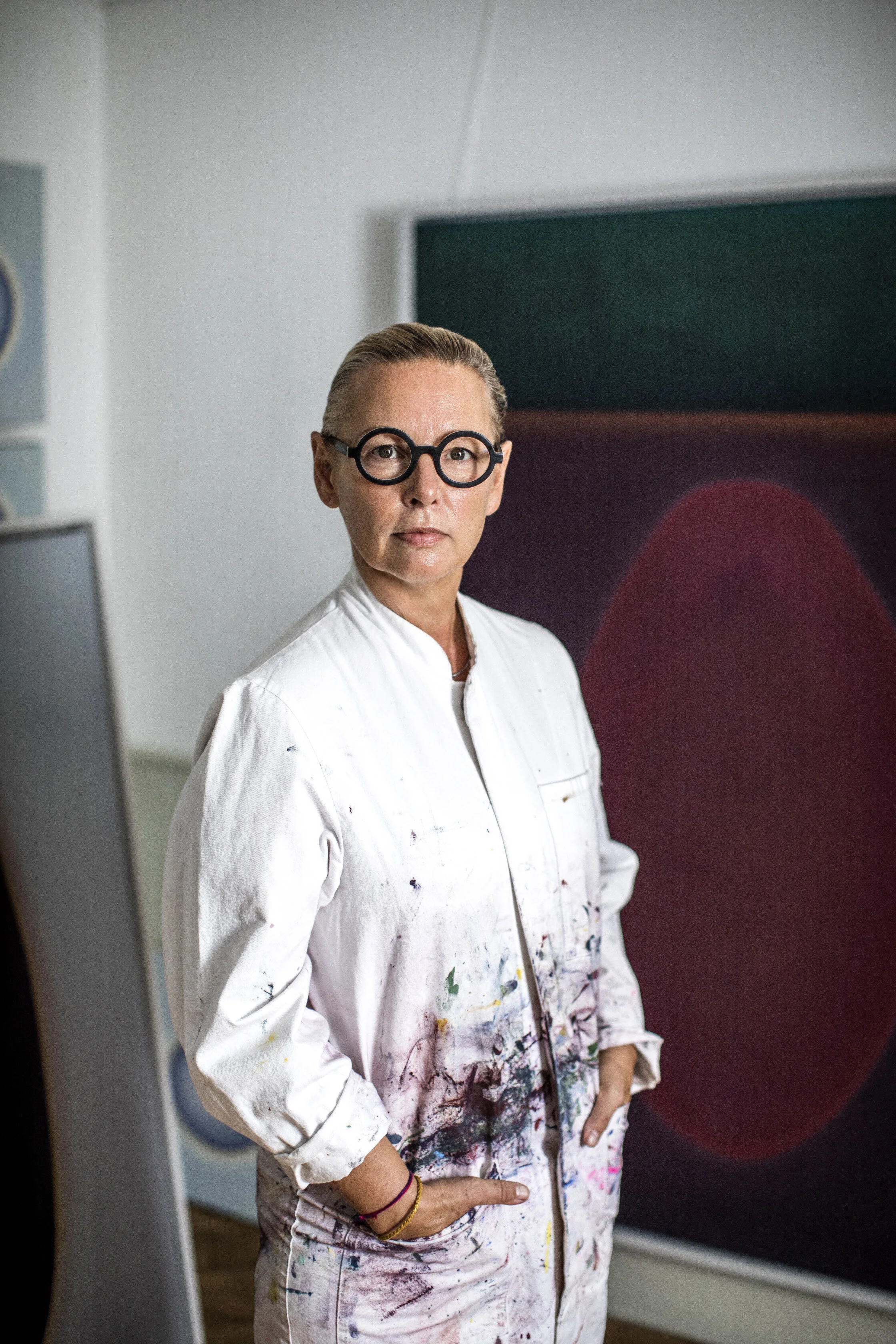
future is today vol.2
Group Show 04.03.2020 - 17.04.2021 EXTENDED
Curated by MOHAMED BENHADJ.
The show FUTURE IS TODAY Vol.2 features artists from around the world with a series of high-level artworks which reflect new perspectives and inspirations that attract our future. This particular online show aims to give the artists a curated show and extensive international exposure that helps them to deal with the online technologies and confront their works and creativity in a virtual environment.
PRESS RELEASE >> ENGLISH
FUTURE IS TODAY. vol.2 | ARTISTS
Bates Belk - Aston Philip - De Zutter Ommery - Eriko Kaniwa - Heikedine Günther - Peter Pitout - Alexander Wtges - Federico Fauli - Erik Nieminen - Tomoki Uematsu - Yutong Liu.
Curator | Mohamed Benhadj
The show FUTURE IS TODAY Vol.2 features artists from around the world with a series of high-level artworks which reflect new perspectives and inspirations that attract our future. This particular online exhibition aims to give the artists a curated show and extensive international exposure that helps them to deal with the online technologies and confront their works and creativity in a virtual environment.
"Thriving in a fantasy world now can guide us all to flourish in our future."
— Bates Belk | Hallucinations: Three
Bates Belk
Bates Belk is a Texas-native Berlin-based music composer and producer. After living 20 years in New York City, Bates relocated to Berlin in 2015 to write and record his dance album “The Dark Spektrum,” which was globally released on 6 March 2020 and contains collaborations with over 50 Berlin-based artists.
Bates is currently working on the score and storyline to his first contemporary dance ballet in Berlin. As a music composer and producer, Bates Belk is constantly striving for the right balance of sound design, melodic content, euphoria, and gut-level instinct while at the same time trying to always write music that makes the audience think about the bigger picture.
Hallucinations: One
Digital music, 2020.
The Dark Spektrum: Dusk: Beware and Be Aware
Digital music, 2020.
Aston Philip
Aston Philip is an artist from Sydney Australia now living and working in New York. Philip is a painter deeply interested in many ecological threads in art throughout history, including but not limited to, biodiversity, human interaction with, and/or neglect of, the land, plants, and animals, the depiction of activists in popular culture as well as a general interest in botanical and animal illustration. He has long been driven to make work reflecting contemporary society’s relationship with the natural world. Recently he is more open to seeing his practice as a way of coping with the state of this relationship, healing it, rather than as a commentary or critique. He is also interested in ideas toward democratizing the economy toward a system more heavily rooted in Earth Justice.
Line Without End
Oil and Acrylic painting on paper and linen, 2016
Around the site of a decommissioned coal powerplant, the land is in an in-between state. The scars of human use unmistakable. But now fallen to neglect; depletion and erosion return to natural forces and wildness fills the void. Through my practice, I work to come to terms with a connection to the land and nature that can be hard to remember.
Misfit (Teufelsberg)
Oil and acrylic on paper over stretched linen, 2016
The in-between state of wildness and human control leave a strange psychic mark over the land at Teufelsberg.
Event Horizon
Oil and acrylic on paper over canvas, 2016
This lake was built for use of cooling the nearby coal power plant. The site is now decommissioned and the land will begin to take its own shape and stretch the lines borne into it.
Cave Painting (Sky Temple)
Oil and acrylic painting on wood, 2016
Teufelsberg is a manmade hill that grew from the rubble of Berlin after WW2. At the top an abandoned United States Cold War listening tower decays into the surrounding woods. Nature and graffiti swallow the site
De Zutter Ommery
The artworks unravel the possibilities provided by digital space and researches new aesthetics within these digital tools. Condensing all this energy society creates into art as an endpoint, Ommery decided to create a new starting point in the process. This is done through commissioned real-estate projects, demanding photorealistic images, and fulfilling economic needs.
These spaces of soon to be buildings are then transformed into new artworks. Creating a duality between polished real-estate images and new digital aesthetics of what space can be. Between being an artist with no fixed value and being a cog in the system with economic value. By pushing the digital experimentation into the extremes he hopes people realize the broad spectrum laying in-between.
Sailing Through Whispering Galleries
Diasec plexi / dibond 3mm, 150x90 cm, 2020
Formed by a digital exploration of architectural space and materiality. By starting up the conversation between the artist and the machine one gets imagery that neither could make or predict on their own. It is through the means of experimentation and by pure childlike wonder and amazement the artwork starts to establish itself. Leaving behind any answers and intentions one could come up with, instead of forming more questions about its own existence.
Lodge of Akrasia II
Diasec plexi / dibond 3mm, 120x150 cm, 2020
Lodge of Akrasia III
Diasec plexi / dibond 3mm, 120x150 cm, 2020
Opera Fantastico
Diasec plexi / dibond 3mm, 120x150 cm, 2020
What can the role of the architect be in the digital space? How do we go about designing digital space? What can it look like and what about functionality? Aesthetics? If the architect is a curator providing the framework for the user, what kind of framework can we provide digitally? And is society waiting for these digital spaces? We have the means of 3D space for a long time now but it keeps getting used for the representation of reality.
Eriko Kaniwa
Eriko Kaniwa is an international award-winning photographic digital artist based in Tokyo and the creator of Sensegraphia fine art. Sensegraphia is a conceptual redefinition of photography, in which the visual aesthetics of the photograph are used to develop and express the sense of nature that enables us to recognize that humans are a part of nature. She creates digitally enhanced abstract artwork as well as fine art photography, based on her unique philosophy.
Neo Primitive Life #1
Digital Conceptual Art / Transforming sea creatures and botanical parts. 50x37.6 cm, 2020
Museum Quality Inkjet Print on fine art paper
Edition of 5 + 2 AP
Neo Primitive Life #2
Digital Conceptual Art / Transforming sea creatures and botanical parts. 50x37.6 cm, 2020
Museum Quality Inkjet Print on fine art paper
Edition of 5 + 2 AP
Neo Primitive Life #3
Digital Conceptual Art / Transforming sea creatures and botanical parts. 50x37.6 cm, 2020
Museum Quality Inkjet Print on fine art paper
Edition of 5 + 2 AP
“A single phylogenic tree maps the evolutionary relationships among all life on Earth. Although the origin of life remains unclear, scientists are drawing closer to identifying LUCA, the last universal common ancestor to exist before life split into the three domains of bacteria, archaea, and eukaryotes. Today, the novel coronavirus is forcing us to create new ways of functioning as a society, but viruses also cast ripples through the established definitions of life.
Are viruses alive or not?
The argument is made that we cannot really say something is a living being if it lacks a cellular structure, cannot survive without the cellular activities of a host organism and has no metabolic, respiratory, or excretory system. It is as vague and meaningful as the definition of our own being that has begun to stand between organic life and digital information.
Yet viruses reproduce. They are matter with the ability to self-replicate, impossible to categorize as either animate or inanimate. What is certain, however, is that viruses have survived on Earth for far longer than we humans.
When I imagine the primitive life forms of prehistoric times, my thoughts arrive at the shapes and movements of cells and bacteria within my own body, invisible to the naked eye but ceaselessly passed down across generations. They have evolved through many stages and at this very moment continue their unending activity within human bodies living in a technological society capable of manipulating genetic material. Over 500 species of bacteria inhabit the human body, with more than 100 trillion bacteria living in each of us. In a sense, humans are collective superorganisms comprising a sophisticated entwinement of microorganisms and human cells.
Although this project is quite far from actual bioscience, the primitive life forms that live on within the natural environment of the human body in contemporary society where genetic engineering has developed—whether they are like some sort of aquatic organism, bacteria, or plant—have taken on new shapes and wisdom within my imagination. Similar to eukaryotes, these neo primitive organisms are vigorously coming to life.” —Eriko Kaniwa.
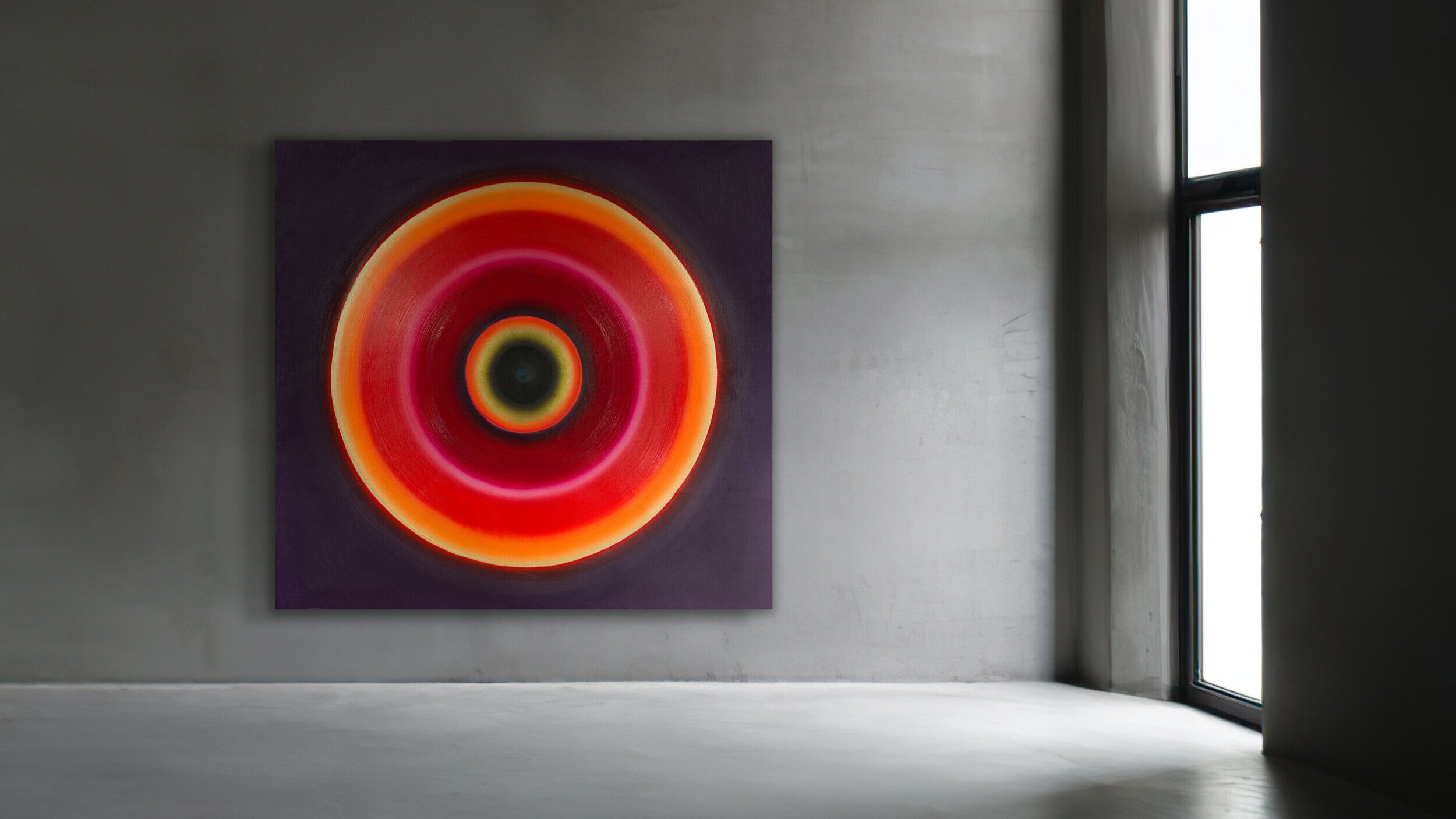
Heikedine Günther
“I am an abstract painter living in Basel and Stalden, Switzerland. My leitmotif is the “core”, encompassing everything between microcosm and macrocosm. I express my research into the theme of the core in paintings between abstraction and natural forms. Working on this I have spent several years developing a unique style of multilayered painting in my remote studio in the Swiss Alps. I have been studying classic art while developing my own artistic practice and got a strong passion for Ottonian manuscripts and gold panel paintings. I am a book lover and collect primitive art and oceanic objects. My own works of art benefit from my broad knowledge of traditional old master’s techniques and my dedicated interest in poly-cultural symbols.” — Heikedine Günther
Core No. 372
Oil on canvas, 2020
Core No. 373
Oil on canvas, 2020
Heikedine Günther’s "Circles of the Mind" series addresses the interplay of microcosm and macrocosm. In this context, the symbol of the circle represents all aspects of wholeness that strive for inner and outer equilibrium. Like the smallest is a reflection of the greatest, so the cosmic order shapes a system of holistic connections on various levels. Each of Heikedine Günther’s paintings begins with a gold-primed canvas on which she meticulously applies three to seven layers of paint. The colors are also documented on the backside of the painting and allow an overview of the variety of colors used. During the painting process, all colors are applied with up to 20 cm wide brushes, the shape of the circle results only from swinging movements of hips and shoulders on the horizontally placed canvas. In this way, the painting process itself contributes to the meditative flow that the circle unfolds, staggered in concentric color zones. Heikedine Günther’s thoughts about life, encounters, and transgressions find their visual reverberation within the composition of the painting. Just like a Zen circle expresses within its simplicity a simultaneous complexity, each circle bears a fluid elegance that inspires a sense for wholeness and reflection.
Core No. 439
Oil on canvas, 2020
Core No. 440
Oil on canvas, 2020
Heikedine Günther explores in her works Core No. 439-440 the powerful transition of light and darkness, orbiting the field of tension between two nuclei. Within the nebulous opposites of black and white – which frame the inexhaustible shades of color as phenomena of the space between – the nuclei correspond to the abstraction of the core, which represents both the essence of life as well as the infinite potential of growth. Within this cosmic exchange of energetic tensions and transitions, a multi-layered dialogue arises that is already initiated in the artistic working process. On closer inspection, the surface of the paintings vibrates with color pigments that emerge from the color-layers underneath.
Both poles of this duality between light and darkness, negative and positive, male and female, have their common origin in the universal whole, which encompasses all dual extremes. This can be related to the thinking of ancient Greek philosopher Heraclitus, who saw all binary oppositions existing simultaneously within us. Therefore light and darkness are to be understood not as oppositional but rather interrelated components. Although in nature, they tend to appear separately, the human perception often links them together. One rejects the other, yet also defines it, so without light, darkness would be imperceptible, as well as the other way around.
Peter Pitout
'Shift' – A body of works focusing on the Phonons phenomena. In condensed-matter physics, Phonons are a unit of vibrational energy that arises from oscillating atoms. The body of work hopes to facilitate access to the concept via visual interpretation of complex phenomena.
Alt
Oil on canvas, 60X50cm, 2020
Conduit
Oil on canvas, 65X50cm, 2020
12th Circle
Oil on canvas, 65X54cm, 2020
Alexander Wtges
Wtges recent work is about of the geometry, the forms and the structures, it is the combination of different concepts of design and architecture where numbers and proportions create order and balance.
Isla 0005
Spray & Metal 182x91 cm, 2020
This series is inspired by the sets of elements that form a single structure.
Orquideas 0102
Spray, Canvas & Metal 76x122 cm, 2020
The orchid series rescues elements, shapes, and colors of different flowers to create new compositions from their geometry
Orquidea 0101
Spray, Canvas & Metal 50x95 cm, 2020
The orchid series rescues elements, shapes, and colors of different flowers to create new compositions from their geometry
Isla 0003
Spray & Canvas 165x175 cm, 2019
This series is inspired by the sets of elements that form a single structure.
Isla 0002
Spray & Canvas 170x170 cm, 2019
This series is inspired by the sets of elements that form a single structure.
Federico Fauli
Coscienza Intuitiva aims to emphasize the lack of content, of language, of meaning, not simply based on the super-collection and sharing of images: rather as a part of a social relationship between people that is mediated by images. Repeated, shared, liked. Where Truth becomes a moment of falsehood. Representation has become a simulation of the meaning of the present through superfluous repetition of any image, figure, iconography, and the reason has become a simulation through fake experiences. The project speculates on the concept of language, expressed as an idea affected in time and configuration. Driven by a compilation process that visualizes the complexity of the current digital age, its fragmentation, and acceleration, the accumulation and ubiquity of objects and images.
Coscienza Intuitiva
Mixed Media Sculpture (Blend Craft/Digital): Resin - Sculpting Plaster - Gloss & Matte Paint – Clear Coating
Coscienza intuitiva
Digital Art, 2020
Trying to elaborate a new visual language based on the amalgamation and super collection. A language as an evolving vessel, in which society out products, identified as objects of daily consumption, artifacts of the banality, collides with ruins and fragments embodying historical and cultural value. A visual Clash, depicting moments and events, through society out products such as toys, memes and figures. Highlighting the value of the leftover and at the same time sculpting a reminiscence of specific junctures in time. The proposal identified in the form of an architectural fragment, a column, that speculates on a new visual language, composed by the amalgamation and mutation of cultural elements, as iconographies and elements of popular culture. Defined as a bold critique towards the current social and image-related society, while trying to sculpt a tangible reference, a Physical Memento, an Archive of the current and past events. The proposal challenges the relationship between beauty and culture, in which Palermo, its contaminated baroque, and its languages, is the Symposium and main reference. Where architectural languages are not fixed, not preconceived, but are the consequence of temporal and cultural adjustments. A stacking of plans and typologies as a stratification of culture which defines its own beauty, the hybridization of continuous exchange and contamination, which reflects in its unique architecture. The proposal referencing to the baroque and the city-specific design of Palermo and its’ architecture, enhances the debate by challenging the temporariness of Architecture and its language, the acknowledgment of its constant mutation as a reflection and representation of the city itself, its complexity, richness, and incompleteness. Hitched by a bold philosophical, physical and poetic critique towards the current society and the everyday indigestion of images and pop-iconographies, it generates and digests forms of Beauty, moving from antiquity to popular culture, speculating on the topic of heritage for the future generations. The final result aims to emphasize the friction and contradiction between the 2 materialities (“natural” stone as an allusion to ancient ruins, and shiny-polished resin as the depiction of the “fake” contaminated popular culture) thus trying to strengthening the crossroads between heritage/modern & craft/digital.
Erik Nieminen
Erik Nieminen’s works present an independent reality, a world that is dependent on our real-world yet it is separate from it. It is a liminal space, a portal into an unreal world. He seeks to dismantle the reality that we inhabit in order to remake reality according to the logic inherent in the painting process. With that in mind, his works cannot be easily categorized, as elements from many genres combine into one. The paintings explore semi-real spaces where nature and architecture come into confrontation, and themes such as climate change are of implicit interest. While his work does not engage with the topic of climate change as a type of messaging, he is interested in the societal and cultural impact of these ideas and the conception that humanity can control nature or vice-versa. Aesthetically, he is mainly interested in the dissolution of space, perspective, light, and time through varying degrees of figuration where the form is created through a responsive and adaptive process over a length of time. Colors and shapes are reworked until an ideal solution is found. The process itself mirrors the way time works – gradually shifting reality until what is familiar evolves into something renewed.
Evening Migration
Oil on Linen, 110 x 160 cm, 2015
This is part of “The Unreal” body of work, which breaks down a mechanical vision and reconstructs it through the imagination of the painter. Here, time and space collide, shifting from night through to evening.
The Other Side
Oil on Linen, 140 x 200 cm, 2015
A reflection expresses the dualistic nature of contemporary humanity. This dualism links up seamlessly with the postmodern idea that we cannot represent reality and that we live in an age of farce and illusions. What is created is a hyper-reality, a reality where the real and the imaginary combine.
Abstract Paradise
Oil on Linen, 130 x 170 cm, 2017
My work is not abstract or figurative – it is somewhere in between these states. All the work begins with abstract shapes and eventually transforms into semi-convincing ideas about our real world. This work is from the “Paradise Not Lost” body of work, inspired by artificial paradises found in our cities.
Primates
Oil on Linen, 160 x 130 cm, 2016
Much of what I make emerge from my experiences in artificial habitats, created in the middle of cities for the purpose of displaying a quasi-paradisaical form of nature. We are provided with and seek out comfort in these places- guided by the idea that nature contains perfection outside of our everyday lives.
In the Looking Glass
Oil on Linen, 160 x 130 cm
This work is part of the “Paradise Not Lost” body of work, which explores semi-invented spaces where architecture and nature collide. In this particular work, the space presented is an uncertain one- is it a real space, a real sky, or is it all a stage?
Tomoki Uematsu
I have created an animation that allows you to experience the concentration of meditation, deep sleep, and a sense of love with your mind and body. In this Youtube, Mr. Ryuji Yoshimura of Qigong puts energy Qigong so that he can feel concentration, deep sleep and affection. Even for those who have difficulty feeling qigong, which is effective for the subconscious, it expands the imagination of the connection between the mind and body in the world of surrealism that combines natural micro and macro objects. Based on Tomoki Uematsu’s own meditation experience, the idea behind this work is that he actually experienced that the feeling of connecting one’s mind and body through meditation and the feeling of liberation in nature are similar. Animation director Marek Ocon, who participated this time, also asked Mr. Yoshimura to experience Qigong and express that feeling with the movement of animation before starting the animation work.
Qigong of Focus
Digital collage, After effect, 2020
It has the energy to eliminate head noise caused by anxiety and negative thoughts and induce brain waves into alpha waves. The eyeball that emerges from the stump at the beginning of the screen is a concentrated symbol, but the eyes of multiple animals on the next screen express anxiety and negative emotions and are likely to be extinguished by flames and fallen leaves. Watching the movement of the stones in the last ring of African ornaments makes me imagine that they are guided by the alpha waves of the brain.
Qigong of Sleep
Digital collage, After effect, 2020
By reducing the noise of thoughts and emotions, the brain is relaxed and the waves that guide the brain waves from theta waves to delta waves flow. The animation begins with the breathing of the mountains at midnight, and the noise of thoughts and emotions flows in outer space. The view of the sky and mountains from the sky incorporates the feeling I felt in my personal meditation experience, but I think it would be interesting if you could imagine the flow of brain waves.
Qigong of Love
Digital collage, After effect, 2020
It is set so that there is a vibration that reduces the judgment of oneself and others and enhances self-affirmation and creativity. When I thought about expressing love based on my meditation experience, the Virgin Mary appeared from the stomach based on the feeling that the body warmed up from around the stomach, and I got the inspiration to stimulate nerve cells. When I entered a deep meditation state and felt love, the experience of feeling like I was in my mother's stomach when I was a baby gave birth to a world view in which a baby was born from the womb.
Yutong Liu
“When you sit in front of me, you become me.”
“It starts from touch, It is generated by touch, It communicates through touch, It will end with touch.”
Touch is based on one of my projects, Machine girl. Touch is a kind of memory. Did you touch your laptop, computer, or your telephone today? In the Western World, “To see the world in a grain of sand, a heaven in a wildflower. Hold infinity in the palm of your hand, And eternity in an hour.” This work discusses the touch between machines and humans. The touch left a mechanical memory deep inside the machine and input of the human’s mind. When we sit in front of devices, we become like them. In the end, what we can be left, the memory could be our last words and evidence of this world.
Touch Series
3D animation, video 01:30, 2020
EXPERIENCE PAINTING ARTWORKS FROM A PHYSICAL SPACE…
Erik Nieminen
Heikedine Günther
Heikedine Günther
Erik Nieminen
Aston Philip
Erik Nieminen
https://we.tl/t-vno9WIsGgk
Erik Nieminen
CONNECT WITH US.
Share your comments here >>
